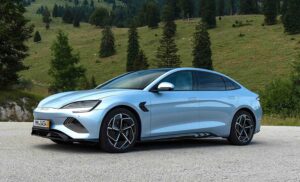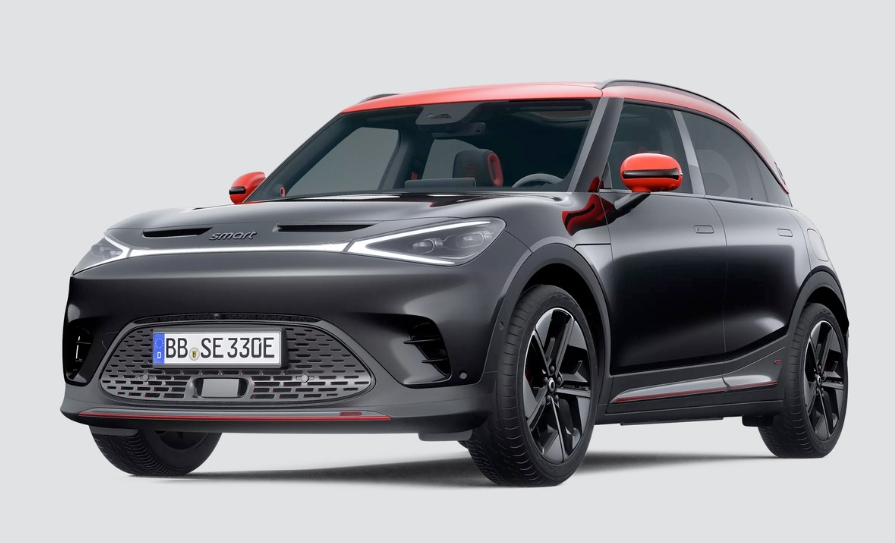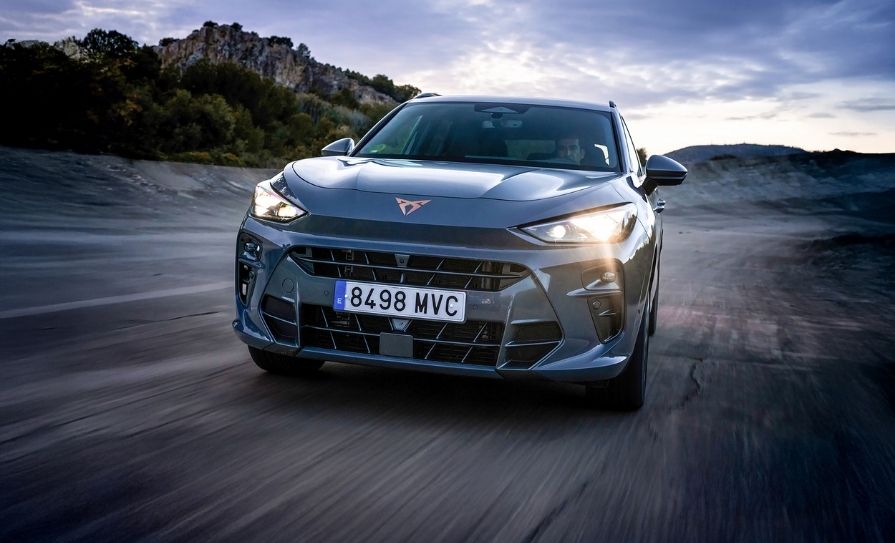Dr Alan Moran on the lesser-known but impressive BYD Seal
I’d like to think BYD has listened to me. On the last two tests of their cars, I have been critical of the mini-screen in front of the driver, feeling it was too small to read the data safely. Now this has changed with a larger screen and a heads-up display on the BYD Seal. The heads-up display is crystal clear, giving speed (and speed limit) data with secondary information about cruise control and lane departure warnings.
BYD is still the largest car company most people have not heard of. Many people have said to me: “BYD, but who makes them?” They are neck-and-neck with Tesla for total worldwide battery electric vehicle (BEV) sales. And we have all heard of Tesla.
The Seal is aimed squarely at Model 3 territory. And the Ioniq 5. Of course, the Model 3 has had a head start for a number of years, with its sister ship, the Model Y, being the best-selling car in Europe last year.
Specs
Things might be due to change. Compared to the rivals, the BYD Seal looks more conventional. It retains the characteristic aerodynamic shape of the class, with hidden external door handles, but inside the Seal looks more normal. It has the BYD large centre display (rotatable, if that’s your thing), with comfortable ‘vegan leather’ seats. Even in the rear passengers are accommodated well, with a large panoramic glass sunroof to improve the feeling of airiness. Normally with a BEV there is a high floor limiting foot room, but the Seal has sufficient for comfort.

The sound system is excellent, with two door speakers in each rear door and even a speaker in the boot.
However, maybe because Drogheda is located in a valley, the radio reception was terrible, even for the local LMFM. I couldn’t get the DAB to work, but that could be me.
Another characteristic of BEV is a high boot floor, limiting boot space. Thankfully, they have thought of forward-folding rear seat backrests which open up versatility. If the Seal were a hatchback, it would have helped even more – but watch this space, there may be something happening on that front (or back), soon.
Acceleration
Now to the second-half of the name – the 3.8s. That’s 3.8 seconds to 100kph from standstill.
I had trouble holding my head off the headrest with repeated acceleration demonstrations. Don’t worry, there is a lesser powered single-engine (at 313bhp) model available which has greater range. That has a 0-100kph time of 5.9 seconds, more than enough for most people.
The ride was quiet and smooth despite the firm suspension. Some washboard surfaces could elicit bumpiness with the suspension. The tyres were Continental’s and gripped well. Combined with the balanced suspension and torque vector control, you knew when they were approaching their limits. Steering was nicely weighted and also gave good feedback, although you knew it was artificial.
Handling is confidence-inspiring with early warning of grip loss. The four-wheel drive is secure with understeer at the limit. The system is sensing multiple times per second what’s happening with traction and correcting it as it goes along. BYD’s system is called iTAC [Intelligent Torque Adaptation Control System]. According to the manufacturer, it has superseded the old method of restoring vehicle dynamics by lowering power take-off, with a more intelligent allocation of drive torque, including torque shift, appropriate torque reduction, and negative torque output (that’s braking, to you and me). It can efficiently reduce or eliminate skidding, unleashing the full potential of the vehicle’s power while significantly enhancing the safety and handling comfort.
Additionally, it features a heated steering wheel and seats that offer both heating and cooling options for added comfort. However, I had to go into menu settings to find these. Not something I’ll do when driving. But saying “Hi BYD” got her (it’s a female voice) to turn them on with no distraction. When parking there are multiple cameras to help. It’s even possible to see how close the front wheels are to the kerb. Speaking of heat, it has the essential (in Ireland) heat pump to squeeze more electrons from the battery.
I like the automatic driver’s seat retraction with the car switched off to ease getting in and out. “Hi BYD” will also get her to open and close electric windows, adjust the air con, among other functions.
Charging
An unfortunate side-effect of driving electric cars is when you mention it to some people they will give you their opinion, even if you don’t ask for it. The problem is you don’t know it’s coming until it’s too late. But I experienced the frustration of an electric car when I went to charge (or should I say recharge?) it. There are three charging stations within walking distance of my house. I was given a tag for EasyGO, one of the more versatile account packages. Not one of the charging stations would accept it, so I ended up plugging it in at home. We have solar, but it managed to drain the home battery to 50 per cent, and all I got was an extra 12km range.
Anyway, the following day I happened to call to Applegreen on the motorway and got 60km in the space of five minutes. Enough time to walk to the men’s room, wash my hands, and return to the car. The cost was €8.90. Now that’s about the cost of what we used to call a gallon of petrol. And if, in reality, the range is 45km, not 60km, then there is really no cost-saving when buying electricity from a forecourt. Even being optimistic it works out at 37mpg. The diesel Mercedes, which I recently reviewed, was significantly better.
With the BYD Seal, you have options. If you don’t need the powerful 530bhp all-wheel drive version (WLTP range 520km), there’s also the rear-wheel drive model, offering plenty of performance with 313bhp and a longer WLTP range of 570km. Both versions are impressive and the Seal is priced between €44,036 and €49,836 after grants. The Seal is excellent and well thought-out. Just don’t buy your electricity from the motorway services.







